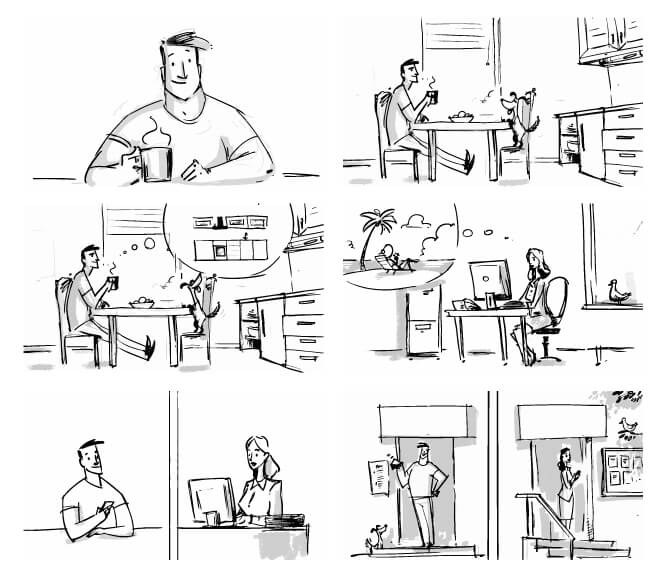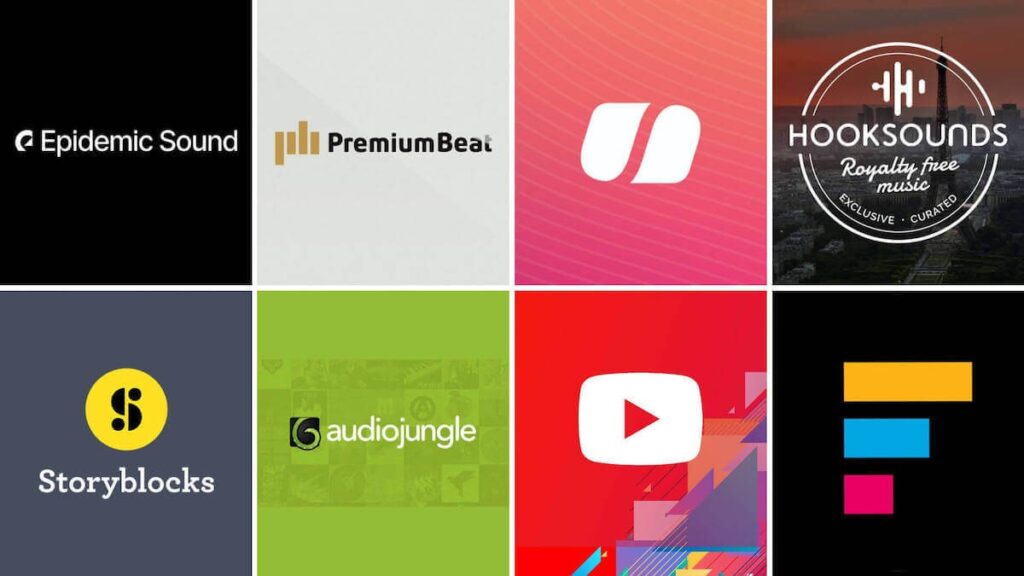Enter the enchanting world of animation, where imagination knows no bounds and anything is possible.
With each frame, a new world is created and a story unfolds before your very eyes. From the whimsical charm of hand-drawn animations to the cutting-edge technology of CGI, animation has the power to transport us to places we’ve never been and show us things we never thought possible.
But the process of bringing these stories to life is no easy feat. It takes a team of artists, designers, and technicians, all working together to create something truly magical.
So, if you’re ready to embark on a journey through the wondrous world of animation, come with us as we explore the process behind some of the most iconic animated films and shows of all time.
Whether you are planning to build your animated video or looking to hire an animation production company to create top of the line video content for your brand, we have put together a detailed step-by-step animation process guide.
What Is The Animation Process?
To learn about the animation process, you first need to understand what is 2D animation?
2D animation involves using two-dimensional objects and characters in a video form as an artistic medium of storytelling and delivering messages. It creates an illusion of movement using the width and height of still images in 2D space.
This brings us to the animation process – it is the technique or method a 2D animation company used to create unique 2D animation videos. Typically the process of creating 2D animation videos includes characters, backgrounds, and storyboards.
Professionals like designers and video animators use software like Photoshop, Adobe After Effects, and Illustrator to build animated videos for diverse industries and audiences.
How Do You Create an Impactful 2D Animation Video?
The animation process steps mostly depend on your animation production company. They can divide the steps into detailed sections or come up with broader categories. For a quick understanding, we have explained a concise four-step animation process in the video below. Make sure you check it out.
Trying to capture the attention of your customers is just one of the reasons marketers are increasingly producing animated video content. Professionals are leveraging 2D animation videos to grow their business by catering to social media audiences, making their websites more entertaining and appealing for customers, and so on.
Even though in a lot of ways, the process of every animation video we build is different, based on the client’s specific requirements, their preferred method of collaborating, and the urgency of the project. However, here are the primary nine steps of the animation process:

#1 Researching
At the core of every animation project is a story waiting to be told, and it all begins with a deep understanding of the project’s purpose, audience, and requirements.
Whether you’re a client seeking our animation production services or an in-house project, we know that taking the time to fully comprehend your needs is paramount to delivering a successful animation.
Our goal is to ensure that everyone involved is on the same page and working together seamlessly towards a common goal.
At the heart of our creative process lies our team’s cohesiveness and synergy, as they work collaboratively to create animations that leave a lasting impression.
We pride ourselves on understanding that each project is unique, and our approach is tailored to your specific requirements. We also get our creative team on a call with the client, so everyone involved can be on the same page.
Do your industry research, find out what competitors are doing, what kind of video content the target audiences watch, and expect from a brand like your client’s company.
#2 Defining the Project’s Scope
Ahoy there! As we set sail on the high seas of animation, we need to establish a strong anchor to ensure we don’t drift off course. Defining the purpose, message, timetables, budget, and ROI prospects are crucial components in building this foundation.
At the heart of every project lies a purpose, a message, and a story to be told. By defining these elements early on, we ensure that our creative team has a clear direction to bring your vision to life.
Additionally, establishing timetables and deadlines will help us stay on track and deliver your animation on time.
While it may not be as exciting as the creative process, determining the budget is a critical aspect of the project’s success. By understanding how much you’re willing to spend, we can allocate resources accordingly and ensure that we deliver a high-quality animation within your budget.
Finally, let’s not forget about ROI prospects. We understand that the success of your project hinges on the return on investment it generates.
By working closely with you and your team, we can help you develop an animation that not only captivates your audience but also achieves your desired ROI. So, hoist the sails, and let’s chart a course to bring your vision to life with an animation that exceeds your expectations.
#3 Brainstorming and Script Writing
Lights, camera, action! As we move into the scripting phase of our animation project, we’re embarking on an exciting journey that will bring your story to life. Crafting a compelling script is like weaving a spell, and we’re here to make sure your message hits home.
In the world of animation, brevity is the name of the game. Your script needs to pack a punch, conveying your message in as few words as possible. Whether it’s a short ad or a longer piece, every word count.
So, let’s focus on cutting out the frills and getting straight to the heart of the matter.
Clarity is key in any storytelling medium, and animations are no exception. You want your viewers to understand your brand, product, or service, and why they should choose you.

By crafting a clear and concise script, you’ll be able to get your message across in a way that resonates with your audience.
But that doesn’t mean you need to be stiff and formal! Your script should be in line with the tone of your animation, whether it’s cute and quirky or serious and formal. A consistent tone will keep your viewers engaged and ensure that your message hits home.
At the end of the day, the script is the backbone of your animation, and a weak script will result in a weak animation.
Before we move to the next stage of the animation process, let’s look at a few pro tips to keep a note of when writing your video script:
- Keep the length of your video between 1 to 2 minutes.
- Avoid creating a wordy script, as it takes away from the visual experience you are trying to create.
- Make sure you follow a specific story format, like a stand-alone story, or a conflict and resolution approach.
#4 Voiceover Recording

With a brilliant script in hand, it’s time to focus on one of the most important aspects of bringing an animated work to life: the voiceover.
Voiceover is a critical component of most animated films, enabling us to create captivating worlds with unforgettable characters and narratives.
Whether it’s a dialogue between characters or narration, the voiceover is a key element in delivering your message to your audience.
The right intonation, style, and tone of the voiceover are all crucial elements that must match and complement the script. Imagine an intense, action-packed animation with a sleepy, monotone voiceover. It’s a mismatch that can derail the entire production, especially when it comes to marketing purposes.
But when the voiceover perfectly aligns with the script, that’s when the magic happens. The audience is drawn into a world where everything clicks into place, where the animation feels like a seamless, organic experience.
You can find premium options for a voiceover artist using platforms like Voices and Fiverr. Ensure to find the perfect voiceover that will enhance your message and bring your animated work to life.
With the right voice, your animation will be unforgettable and leave a lasting impact on your audience.
#5 Storyboarding
Storyboarding is a creative process that brings your animation project to life! A storyboard is a visual masterpiece that breaks down your animation scene by scene.
With the advent of computer software, storyboarding has become a lot more fun and exciting. These sketches help you to visualize the script, scenes, and the flow of your animation in a whole new way.
Storyboarding is considered an indispensable part of the animation production process, and for good reason. It is the best way to breathe life into an animation project, bringing together multiple scenes with different characters, angles, and messages.
A storyboard can provide you with a bird’s eye view of the project, giving you a holistic understanding of how everything fits together perfectly.
But that’s not all – a storyboard helps you identify what works and what doesn’t. By visualizing the script and rendering it in picture form, your team can see the project’s strengths and weaknesses.
A scene that doesn’t flow well or a clumsy transition can easily be spotted and rectified, making the animation process smoother and more efficient.
In essence, storyboarding helps you save time and money by ironing out the kinks early on in the production process.
Here is what a storyboard looks like:

#6 Illustration or Styling
At the stage of illustration, the magic of animation truly comes to life! With a dynamic combination of diligent research, masterful storytelling, and precise storyboarding, the animation team’s true talents are unleashed.
Utilizing cutting-edge motion graphics software, animation tools, and the creative process of skilled artists, the team can transform their vision into a captivating reality!
But where to begin? Enter the invaluable tool of style frames! These nifty visual representations serve as a sneak peek into the upcoming scenes and props of the final animation.
With multiple styles experimented with and presented to all stakeholders, the winning art direction can be chosen – one that perfectly captures the essence of the script, effectively communicates the message of the animation and resonates with the target audience.
All in all, the illustration stage is where the imagination of the animation team takes flight, and the story comes to life in ways beyond the wildest of dreams!

#7 Animation
The animation process is a highly technical and intricate art form that requires attention to detail and creativity.
To create animated videos that captivate your audience and convey your message effectively, you must master the animation process. Here are some essential elements to consider:
Smooth movements:
Animated videos come to life when characters and objects move naturally. The key to achieving this is to create smooth and fluid movements that give your animation a sense of realism.
This requires paying attention to the smallest details, such as the movement of a character’s hair or the swaying of leaves on a tree. By focusing on the details, you can make your animations look more lifelike and engaging.
Seamless transitions:
Seamless transitions are crucial to the success of your animated video. They serve as the glue that binds the different scenes together and keeps the audience engaged. There are several techniques you can use to create smooth transitions, such as using fades, wipes, and dissolves.
Whatever technique you choose, ensure that the transitions flow seamlessly to avoid jarring the viewer out of the story.
Mastering lighting:
Lighting is an essential element of the animation process. It has a significant impact on the mood of your animation and can highlight or obscure specific elements.
Mastering lighting requires attention to detail and an understanding of how to create the right atmosphere for your animation.
Whether you want to create a bright and cheerful environment or a dark and moody one, lighting plays a crucial role in achieving your desired effect.
The animation process is a complex and technical art form that requires attention to detail and creativity. By mastering the key elements of smooth movements, seamless transitions, and lighting, you can create animations that captivate your audience and convey your message effectively.
Our animators add life to the characters, objects, and backgrounds and top it off with a perfectly timed voiceover that brings your video to the final stage. However, animation is a time-consuming process, so make sure you provide your animator with the creative space they need.
#8 Sound Design
When it comes to animation, sound design, and music play a critical role in creating an immersive and captivating experience for the viewer. But choosing the right music and sound effects can be a daunting task, especially if you’re new to the game.
Thankfully, there are plenty of platforms where you can find royalty-free sound effects and music to use in your animations.

However, it’s not just a matter of picking any sound and music. To create a successful animation, you need to consider the tone, script, and flow of your project carefully.
A misjudged sound can break the immersion and distract from the story you’re trying to tell. That’s why it’s crucial to take the time to find the right music and sound effects that complement your animation.
In fact, sound design and music can be just as crucial as the animation itself. The right sound can evoke emotions and set the tone for the scene.
A poorly chosen sound or music track can take away from the experience and turn off your audience. So, when it comes to sound design and music, make sure you aim for top-notch quality to hit the right chord with your viewers.
Often, we use platforms like AudioJungle and Melodyloops to find the right, high-quality, royalty-free music that goes seamlessly with the overall vibe of the video.
However, if the client needs and has a high budget to pay for the professional, we can also hire a music composer to come up with an original music track.
The music is genuinely the stage that adds life to the story. It brings everything together and creates the magic it was always supposed to. Check out how we used an upbeat piece of music for a client, to help viewers better consume the information in the video:
The secret 9th step – Create Buzz
But… there is a secret 8th stage to our animation process – generating a buzz.
At every step of our animation video production process, we go the extra mile to ensure your video stands out among the competitors and caters to the wants of audiences of that particular platform like social media channels, websites, and YouTube.
With some buzzing final touch-ups and quality assurance, your 2D animation video is ready to create an impact on your brand.
Can’t wait to hire the best video animation companies? Reach us today to discuss your next amazing video.
Animation Production Process FAQ
How many steps are in animation creation?
The number of steps involved in creating an animation can vary based on factors such as the project’s complexity, the animation studio’s preferences, and the size of the team. However, at the very least, there are four essential steps: outlining the project, writing a script, selecting an art style, and creating illustrations and animations.
In addition to these, there are several other important elements of the animation process, including mood boarding, style framing, storyboarding, sound design, voiceover recording, and music.
What are the 8 stages of the animation process?
Creating an animation involves 8 crucial stages that require your undivided attention:
- Researching
- Defining the project’s scope
- Writing the script
- Voice recording
- Storyboarding
- Illustration
- Animation
- Sound design
What is most important in the process of animation creation?
A crucial aspect of the animation process is to maintain a holistic perspective throughout the project, regardless of the number of animation stages or the diverse opinions of stakeholders. It’s essential to ensure that the final animation product represents a coherent and unified whole that seamlessly flows, effectively communicates its message, and captures the viewer’s attention. Without these qualities, the animation video will lack a distinct identity.




